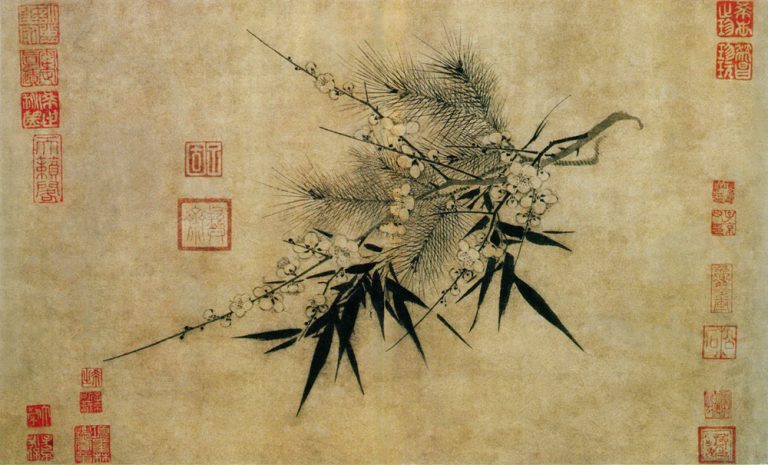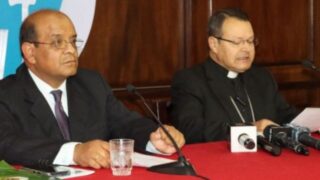By refusing permits, blocking roads, and sending hundreds of police officers to control believers, authorities impeded the annual pilgrimage to Mozi Mountain.
by Zheng Jie
Mozi Mountain – the most important Catholic pilgrimage site in the Inner Mongolia Autonomous Region, located within the Diocese of Jining – has been attracting believers from all over China for years. But with the increasing CCP’s control over pilgrimage sites, as part of the general crackdown on religions in the country, the faithful find it more and more challenging to express their devotion by making spiritual journeys to this holy place.
As every year, on August 2, an endless stream of believers from across China came to partake in the pilgrimage to Mozi Mountain. But they started encountering difficulties already on the way: the police set up roadblocks on the main road leading to the mountain, forcing vehicles to take a detour and traverse small rural roads. When pilgrims finally arrived at the foot of the mountain, they discovered that they could take only one road to get to the pilgrimage site atop it. The ten-kilometer journey took a very long time since numerous checkpoints were set up along the way to inspect if pilgrims had special access permits that are issued by the local authorities ahead of the pilgrimage.


“You have to apply for a pilgrimage vehicle permit one month in advance, and the process is not easy,” one of the pilgrims explained.
A believer from Hohhot, the capital of Inner Mongolia, added that he starts the permit application process already at the end of June. “Although I was successful this year, I still faced restrictions. I wasn’t allowed to drive my car up the mountain. I had to park it at the foot of the mountain and ascend the mountain by foot,” the believer explained.


A taxi driver revealed to Bitter Winter that out of 2,700 registered taxis in Jining, a city close to the mountain, only three or four had been issued pilgrimage travel permits. All others were not allowed to take believers to the pilgrimage site.


On the way up the mountain, many shortcuts leading to the pilgrimage site were dug up or otherwise obstructed, some were blocked off with barricades. Because of these restrictions and obstructions, many pilgrims had to traverse the ten kilometers up the mountain on foot, leaving many people exhausted. Especially the elderly, for whom the journey was arduous; they had to use canes to struggle up the mountain.


Police officers guarded every intersection leading to the pilgrimage site. According to one of them, the government dispatched over 300 officers, including 40 members of the special police force, in more than 100 vehicles two days in advance. The entrance to the mountain path from a village at its foot, the parking lot, and roads leading up the mountain were all controlled by the police day and night.


As Bitter Winter reported earlier, on the August 2 pilgrimage last year, the local government mobilized more than 200 personnel to set up checkpoints at all the main traffic routes leading to Mozi Mountain. Two gates for security checks with facial recognition systems were deployed at the entrance to the pilgrimage site to inspect each pilgrim. The government also used drones to interfere with the mobile signal to prevent pilgrims from transmitting videos and images online.
Similarly, extensive surveillance equipment was deployed this year, the Public Security Bureau’s command center monitoring all the pilgrims in real-time.
Because of the increasing control, the number of pilgrims to Mozi Mountain has plummeted in recent years. “In the past, there would be more than 100,000 pilgrims. This year – only about 20,000,” a police officer made his estimate when asked by Bitter Winter.
The reducing number of pilgrims is also due to preventative control measures implemented in localities where believers reside, prohibiting them from going on religious journeys in the name of “safeguarding social and political stability.”
“Some of my family members work for state-run institutions. All of them were prohibited from going on the pilgrimage,” explained a local elderly believer.









